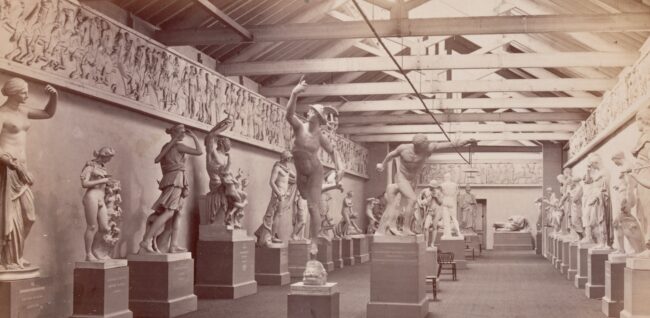Major new additions
[photo: Charles Nettleton: Sculpture Gallery, National Gallery of Victoria, albumen silver photo, c.1872, detail (SLV H96.160/1789)] Two major groups of entries have been added since this site was launched in July 2020: Illustrated Books, a new category. Initially, the books catalogued have been limited to significant examples acquired up to 1861 (with linked artist


